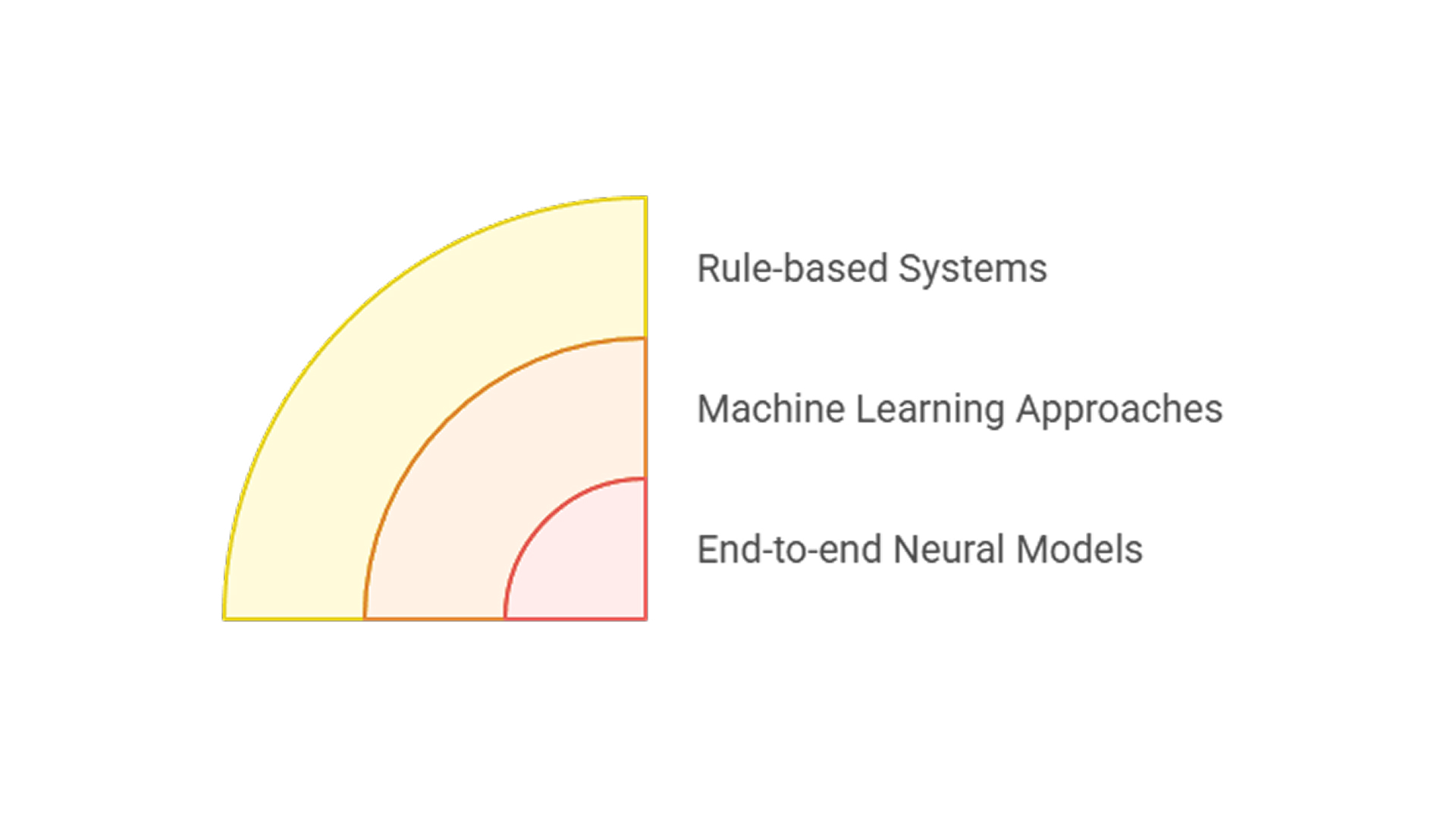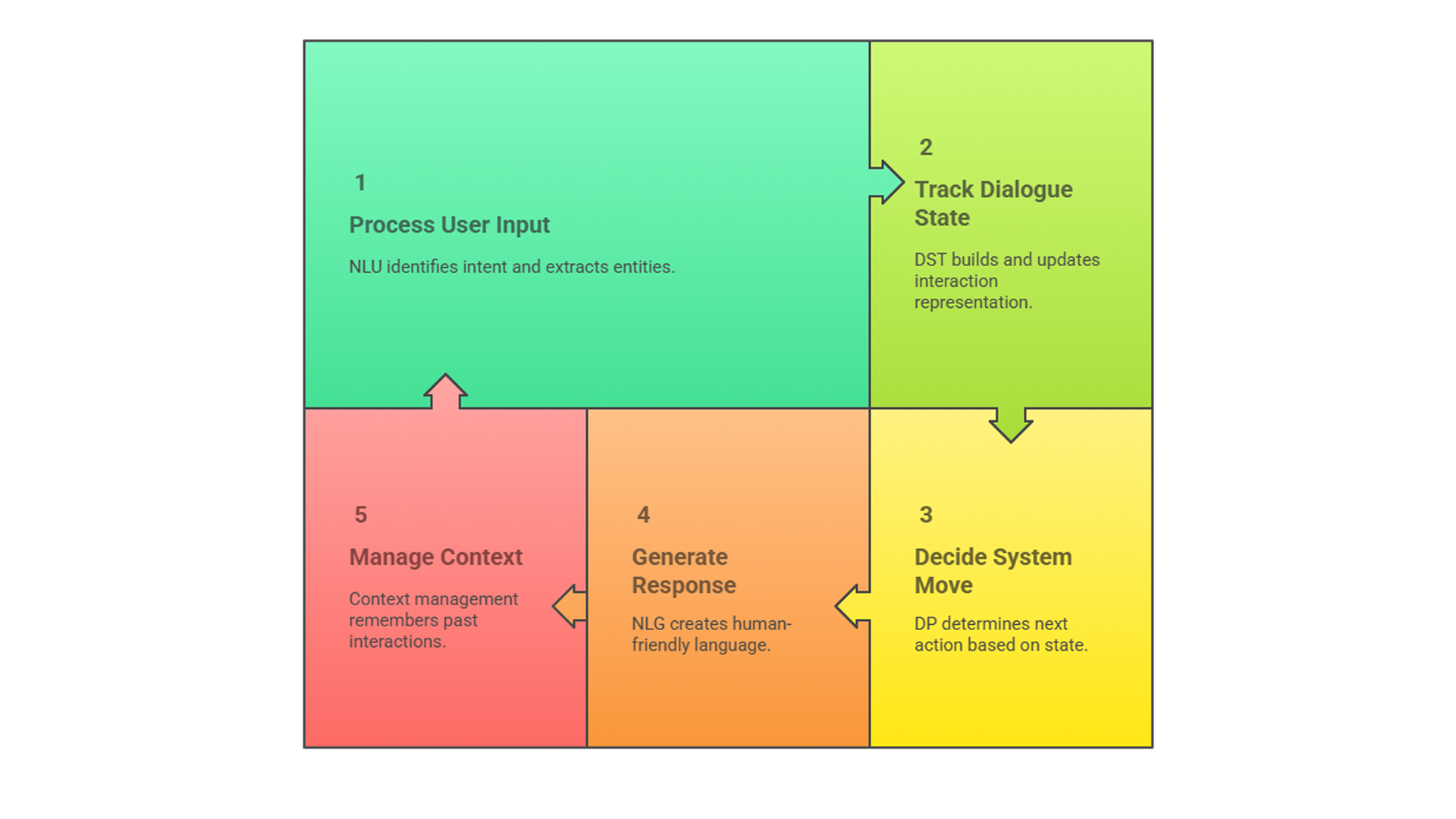What is Dialouge Management?

Team Thinkstack
May 29, 2025
Table of Contents
Ever wondered how chatbots in customer service, voice assistants like Alexa or Siri, or AI systems in healthcare and finance manage to respond almost like a real person? Dialogue management is what allows these systems to hold coherent, context-aware conversations that feel purposeful and human-like.
Dialogue Management (DM) is the central control mechanism in any conversational AI system. It ensures the dialogue flows logically, drives task completion, recovers from errors, and coordinates backend services. Without it, conversations break down and systems fail to act intelligently.
Once user input is processed through natural language understanding (NLU), which identifies intent and extracts entities, dialogue management takes over, orchestrating the conversation using components like:
- Dialogue state tracking (DST) tracks everything that has happened in the conversation so far and builds and updates a structured representation of the ongoing interaction, such as which slots are filled, what the current user goal is, and any pending actions.
- Dialogue policy (DP) decides the system’s next move based on the current state. Should it ask a follow-up question? Confirm something? Pull information from a database? These decisions can be driven by rules, learned behaviors, or predictive models.
- Response generation (NLG) turns the chosen action into natural, human-friendly language. It could be a fixed template, a dynamic sentence, or even a fully generated reply using neural models.
- Context management allows the system to remember what happened earlier in the dialogue, across multiple turns. More advanced systems even manage long-term context such as user preferences, past interactions, or persistent goals.
Dialogue management ensures coherence and flow, making conversations feel natural across multiple turns. It can handle ambiguity, asking clarifying questions, or making informed guesses. In goal-driven tasks, it drives task completion step-by-step. It recovers from errors, steering the conversation back on track when things go wrong. By managing context—both short-term and long-term—it enables personalized, relevant responses, and can coordinate backend services like APIs or databases to act on user intent.
Approaches to Dialogue Management

There are different ways to build a dialogue manager depending on the complexity of the task and the flexibility required.
- Rule-based systems are the most traditional approach. These follow predefined scripts or decision trees, making them easy to understand and control. It works well for simple, structured interactions, but is rigid and often breaks when users stray from expected paths.
- Machine learning approaches learn from data instead of relying on fixed rules. It predicts the next system action by analyzing patterns in previous conversations and tracking user behavior, dialogue flow, and outcomes. This makes it more flexible than rule-based methods, but it requires annotated training data and careful tuning to work well across domains.
- End-to-end neural models handle everything, state tracking, policy, and response generation, all in a single system. Often powered by large language models (LLMs), It is designed to manage open-ended conversations, capture deep context, and adapt dynamically to user input. These systems are powerful but data-hungry and computationally intensive.
Choosing the right approach depends on the use case; some applications benefit from the reliability of rules, others need the adaptability of learning-based methods, and the most complex benefit from the rich contextual understanding that neural systems can provide.
How Dialogue Management Works

1. Preprocessing user input
The system first needs to understand the user’s message. This is handled by the natural language understanding (NLU) component, which takes raw input, spoken or typed, and converts it into a structured format that the system can act on.
- Intent is what the user wants to achieve.
- Entities/slots are the key details that define the task.
- Dialogue acts (in some systems) show what the user is doing with their message, like asking a question, making a request, or giving information.
This structured interpretation is passed to the dialogue manager, enabling it to make informed decisions based on both user intent and context.
2. Tracking dialogue state
It maintains a dynamic memory of the conversation, known as the dialogue state, which includes what information has been provided, what’s still missing, and what the user is trying to achieve. The state is updated with every new input, allowing the system to track what has already been asked or answered and what needs clarification. It also helps resolve references like pronouns (“it”, “that one”) by linking them to previously mentioned entities, ensuring continuity and coherence across multi-turn or complex conversations.
3. Deciding the Next Action (Dialogue Policy)
Then the system needs to decide what to do next. This is the role of the dialogue policy (DP) component, which selects the most appropriate system action based on the current state of the conversation.
Common system actions include:
- Request: Ask for missing information.
- Confirm: Verify a slot or clarify intent.
- Query: Retrieve data from a database or API.
- Execute: Carry out the user’s goal, like submitting a form or booking a ticket.
4. Generating the Response
The final step is to generate a user-facing message. This is handled by the natural language generation (NLG) component. NLG takes the system action and turns it into a coherent, human-readable sentence or prompt. It ensures the system’s decisions are clearly and naturally communicated to the user, helping maintain engagement and understanding throughout the conversation. This can be done using methods such as:
- Templates: Fixed messages with placeholders.
- Rule-based responses: Dynamically selected based on conditions.
- Neural models: Learned models that generate responses from scratch using deep learning.
Conclusion
Dialogue management is one of the most essential components at the core of any conversational AI system. It ensures that each interaction remains coherent, responsive, and human-like, no matter how complex or multi-turn the task may be.
But it also comes with significant challenges. Handling ambiguity, managing long conversation histories, recovering from errors, scaling to new domains, and requiring large amounts of quality training data all make building robust dialogue management systems a deeply complex task. Personalization, flexibility, and integration with backend systems add additional layers of difficulty.
As models get more advanced, conversations with chatbots will start to feel just like talking to a real person. With the integration of video, audio, and multimodal capabilities as seen in systems like ChatGPT, the line between human and AI is getting harder to see.